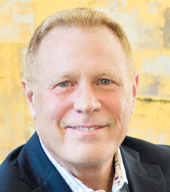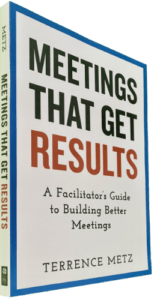The continuum of leadership behavior provides one context for understanding the best time and place for individual decisions versus group decisions. That continuum, as illustrated below, ranges from the completely subordinate-centered approach to the completely leader-centered approach. In between these extremes are another four types that blend or offset the “center” perspective.
Both approaches can provide value, while specific advantages depend on some of the factors discussed below. Frequently, the advantages of group decision-making include:
- Improved quality of decisions, proven over and over because of contributing factors such as . . .
- Ability to generate more ideas and options
- Self-monitoring that forces participants to keep each other honest
- Fewer errors in using information that is available
- Availability of more information
- Reduction of potential individual bias
- Willingness to manage higher levels of risk
- Increases ownership through higher levels of understanding, acceptance, and likelihood to make necessary adaptations during implementation.
- Participating individuals are strengthened, learn more, and can more readily re-apply the same rationale when they are making subsequent individual decisions.
Downside of Group Decision-making
There are some downside considerations as well including:
- Potential to take more time
- May create or heighten expectations, perhaps making them unobtainable
- Could be at variance with management or senior staff
- Quality of the output or decision might be hampered if the group is dominated by an individual(s), submits to forced selection or voting (leading to “losers” and consequent abandonment of ownership), or congeals into what Janis (1972) describes as “Groupthink.”
Groupthink describes a state or condition when the group regresses into poor thinking and social pressures. Janis claims that three factors increase the likelihood of groupthink, namely: insulation from qualified outsiders, leaders who promote their favorite position, and strong cohesion. You may be witnessing groupthink if you observe some of the following symptoms:
- Excessive optimism and illusion of invulnerability
- Tendency to dismiss contrary points of view accompanied by collective efforts to rationalize their own position or discount the positions of others
- Unquestioned beliefs in the group’s supposed moral superiority and ignoring the consequences of their decision(s)
- Prejudicial comments and stereotyping outsiders not in the meeting
- Audible and non-verbal pressure on participants to conform
- Censorship of deviations from what has congealed to be ‘consensus’
Research shows, however, that decision-making by consensus tends to result in higher quality decisions than command control, manipulation, persuasion, voting, and other means of compromise.
What is Consensus?
Consensus must be carefully defined. A robust method will make full use of all the resources in the group, can be relied on for acceptable ways to reconcile conflict, and will generate the ownership a group needs to ensure that what goes on in the meeting is carried out after the meeting has concluded. We highly recommend that ‘consensus’ DOES NOT mean we are making everyone happy. Rather, we are striving for a common acceptance and level of understanding that would include ‘yes’ answers by all participants to the following questions:
- Can you live with this (decision/ plan/ output/ outcome, etc.)?
- Will you support it professionally and not subvert it when the meeting concludes?
- Will you personally lose any sleep over it?
Resulting in Synergy
We could define synergy as the increased effectiveness of working together where the outcome becomes greater than the sum of the parts. We are seeking an answer that did not walk into the meeting, rather it can be created during the meeting. For a meeting with nine people, for example, we are looking for the tenth answer. Synergy frequently results among groups that are seeking consensus, built around a common goal. When supported by strong facilitation, participants agree on a clear and common goal (typically the meeting deliverable), share openly, listen carefully, and think clearly, and they are likely to achieve synergy.
______
Don’t ruin your career by hosting bad meetings. Sign up for a workshop or send this to someone who should. MGRUSH workshops focus on meeting design and practice. Each person practices tools, methods, and activities every day during the week. Therefore, while some call this immersion, we call it the road to building high-value facilitation skills.
Our workshops also provide a superb way to earn up to 40 SEUs from the Scrum Alliance, 40 CDUs from IIBA, 40 Continuous Learning Points (CLPs) based on Federal Acquisition Certification Continuous Professional Learning Requirements using Training and Education activities, 40 Professional Development Units (PDUs) from SAVE International, as well as 4.0 CEUs for other professions. (See workshop and Reference Manual descriptions for details.)
Want a free 10-minute break timer? Sign up for our once-monthly newsletter HERE and receive a timer along with four other of our favorite facilitation tools, free.

Terrence Metz, president of MG RUSH Facilitation Training, was just 22-years-old and working as a Sales Engineer at Honeywell when he recognized a widespread problem—most meetings were ineffective and poorly led, wasting both time and company resources. However, he also observed meetings that worked. What set them apart? A well-prepared leader who structured the session to ensure participants contributed meaningfully and achieved clear outcomes.
Throughout his career, Metz, who earned an MBA from Kellogg (Northwestern University) experienced and also trained in various facilitation techniques. In 2004, he purchased MG RUSH where he shifted his focus toward improving established meeting designs and building a curriculum that would teach others how to lead, facilitate, and structure meetings that drive results. His expertise in training world-class facilitators led to the 2020 publication of Meetings That Get Results: A Guide to Building Better Meetings, a comprehensive resource on effectively building consensus.
Grounded in the principle that “nobody is smarter than everybody,” the book details the why, what, and how of building consensus when making decisions, planning, and solving problems. Along with a Participant’s Guide and supplemental workshops, it supports learning from foundational awareness to professional certification.
Metz’s first book, Change or Die: A Business Process Improvement Manual, tackled the challenges of process optimization. His upcoming book, Catalyst: Facilitating Innovation, focuses on meetings and workshops that don’t simply end when time runs out but conclude with actionable next steps and clear assignments—ensuring progress beyond discussions and ideas.





Reblogged this on Gr8fullsoul.